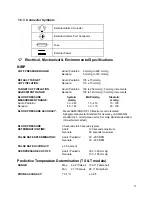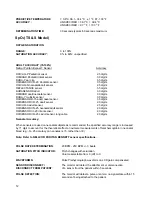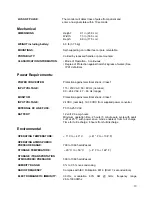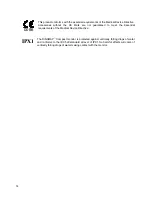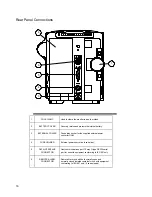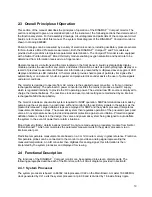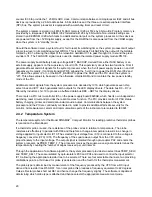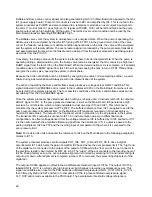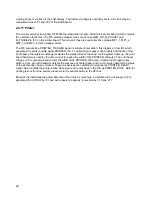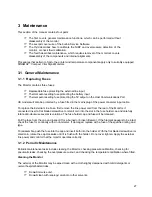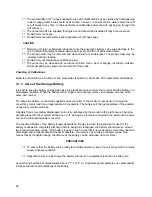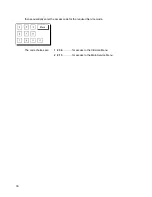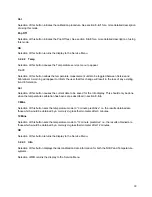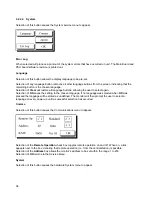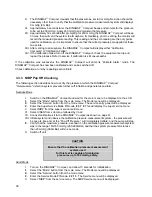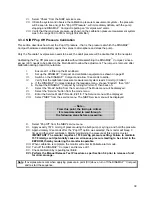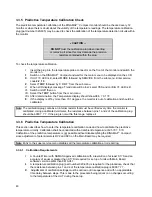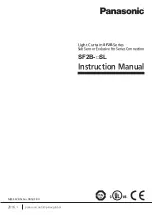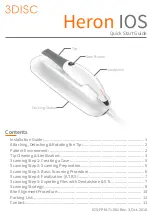
25
Communications signals use the RS232 bi-directional serial format. Digital TTL level signals from the
system processor are converted to RS232 level signals on the power supply board by IC13, which
generates the necessary positive and negative voltage swings. In addition, inverted TTL data transmit and
receive lines are provided. A 5-volt supply is also made available to the serial port, this being protected by a
0.1 amp thermal resetable fuse.
2.4.9 User Controls
The user controls are comprised of four push buttons; power, stat, NIBP start/stop and alarm silence, and
the rotor control. When the rotor control is turned, it operates an optical encoder producing a Gray code
output. Pressing the rotor operates a push button switch. These rotor control signals and the four push
buttons are encoded together on the switch board by a register latch IC2. The register is periodically polled
by the system processor to determine if any of the switches have been operated. IC2 is controlled by the
chip select signal KEY_CS and the read signal LD_RD. KEY_CS is produced by the Main Board chip select
decoder IC16 under control of the system processor, while LD_RD comes from the processor.
The ambient light detection circuit comprises of the light dependant resistor LDR1 and a bias resistor in a
potential divider configuration. A change in the level of incident light on the LDR1 causes its resistance to
alters, changing the voltage applied to the PIC ADC which determines the ambient light level. The system
processor regularly requests the ambient light level measurements from the PIC, and in turn controls the
brightness of the LED displays on the display board.
2.4.10 Displays
All displays, except for line power indicator, are multiplexed, and are split into three separate control circuits,
each with its own display driver. The power / charging green LED is controlled by the PIC software.
The three LED display drivers (IC1, 2 & 3 on the display board) are Maxim MAX7219’s, which are controlled
by the system processor via the SPI bus. The LED parameter displays are divided into functional groups on
the display board. IC1 drives the systolic and diastolic displays; IC2, the Temperature and MAP displays;
IC3, the Heart Rate and SpO
2
displays as well as the battery, °C, °F and Heart Rate discrete indicators. A
current limiting resistor attached to iSET input of each driver IC sets the maximum segment current in the
display; each current limiting resistor is different because each driver IC controls different sized LEDs. IC3
drives red and amber seven segment displays as well as red and amber discrete displays, additional low
value resistors or links R1 to R11 are inserted in series with the anode of each diode to provide different
LED currents within the same multiplex group.
The display drivers are all controlled by the system processor via the SPI bus data signal SPTXD. This
transmits the display data and controls the brightness of the displays by varying the multiplexer’s PWM
ratio. Data is latched into each driver ICs when the respective load signal LED_LOAD0-2 is pulled high by
decoder IC17 on the Main Board. This is synchronized with the LED SPI clock signal LED_CLK from the
system processor.
Text and graphical data is displayed on the LCD graphics module, which contains its own on-board driver
electronics. The module is controlled by the system processor via filtered data bus DB0 ~ DB7, address
signal A4, RESET and the LCD_CS, LD_WE and LD_RD lines. The LCD_CS line is produced by the Main
Board chip select decoder IC16, while the LD_WE and LD_RD lines are derived from the system
processor’s R/W and CS and logic ICs IC1 & IC27.
Backlight illumination of the LCD is provided, the green LED source being under software control via the
system processor. The BACKLIGHT signal is decoded on the Main Board and used to turn on an N-channel
FET TR1 on the display board. A resistor sets the current and hence the constant backlight brightness.
The LCD module requires the +5VD and -VLCD supplies to function. The -VLCD supply is derived from the
-12VR supply and can be trimmed by potentiometer RV1 on the switchboard. This adjusts the effective

